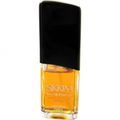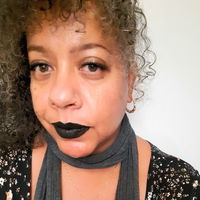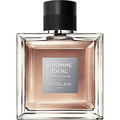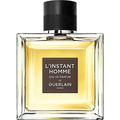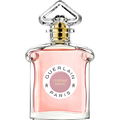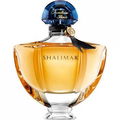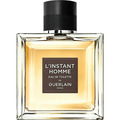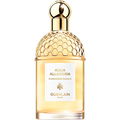05/18/2015

jtd
484 Reviews

jtd
Very helpful Review
7
Parure
The signature scent is an obsolete model of perfume use. It was the perfume you mated with and wore exclusively day in, day out. If your perfume was discontinued or fatally reformulated, you were out of luck. I read often about the drawbacks of so many perfume releases each year. Creativity and exploration in commercial perfumery is stifled by market needs, narrow margins and short time frames for success. The explosion of 'niche' is impossible to keep up with without curation. Each year, hundreds of launches are aimed at the same fat middle of the bell curve. 25 years ago the dilemma was simply a dozen men's perfumes that tried to copy Davidoff Coolwater’s success after the fact. Today it’s hundreds of concurrent launches that all smell like Bleu de Chanel, each following the same model of risk management.
iTania Sanchez’s analysis that Chanel 5 wasn't successful due to marketing but to quality isn’t applicable to new perfumes. Half of those hundreds of simultaneous fragrances don't smell any worse or much different than Bleu. The quality, innovation or artistry of the product are the least important variables in the equation. Branding and marketing are the deciding factors and Chanel wins through PR power and prowess alone.
The lifelong signature fragrance has become a losing prospect. Perhaps a better model is to swim out a bit further and let the tide carry you. I don’t mean to Learn to Stop Worrying and Love the Wall at Sephora. But investigate a bit. Interested in oud? You’ll have hundreds to choose from. Don't like oud? Try one of the throngs of translucent incense perfumes. Rose is having a moment these days and there are some gorgeous Rose perfumes. Why not try one of those? Even a genre as tired as for the Fruity Floral has been tested by evolution for long enough that there are some solid choices.
If you never step into the same river twice, maybe this constant flow of new perfumes isn't a bad thing. I can't think of any given time in the past 20 years when there haven't been a good number of exceptional perfumes available. I'm thrilled that Guerlain seem to have found a way to resurrect Mitsouko. But if it had simply gone the way, I would have shed a tear and moved on. This attitude is not ahistorical. There lineages, traditions and movements in perfumery that continue whether historical icons remain extant or not.
We reminisce about signature fragrances when we talk about dear old Gran who wore Arpège and Grand-dad who used to wear Caron pour un Homme. Forget the arcadian past and ask yourself, would anyone be better off still wearing Giorgio every day rather than having discovered Carnal Flower? What if your boss still wore Opium rather than l’Air du Désert Marocain?
The choices are there if you chose to act. Investigate new entries in a genre that you’ve like in the past. Discover something completely new. Follow a perfumer whose work you’ve admired. There’s a lot of perfume bliss to be followed these days
**
But back to Guerlain Parure and the value of the new. A large decant of the discontinued but coveted Parure was sent to me by a generous friend who has a particularly good ability to read perfume. I think there was some degree of test implied in the gift. What would I do with Parure? Thinking about the river of new releases has influenced my take on Parure.
From a market perspective, novelty has come to be a universally positive attribute. It has a value beyond mere goodness. If new is good, then newer is better. The latest is the greatest.
Oy, did Parure missed the boat.
Parure was released in 1975, composed by Jean-Paul Guerlain. For perspective, Guerlain released Chant d’Aromes, a prim powdery floral in 1962, Chamade, an exquisitely powerful green floral from 1969 and Nahema, an over-the-top disco queen in 1979. How is it possible that Parure is so much more in the mold of Chant d’Aromes than Nahema?
I don’t think Parure was intended to be retro. It was simply behind the times and was released into a market that had already had many similar fragrances for years. Aldehydic floral chypres: Paco Rabanne Calandre (1969), YSL Rive Gauche (1970). Green powdery chypres: Estée Lauder Private Collection (1973), Weil de Weil (1971). The more emancipated green fragrances had left the dainty green floral aldehyde behind. By emancipated, I mean taking the lead like Aromatics Elixir (1971), carefree like Revlon Charlie (1973), or active and engaged like Estée Lauder Aliage (1972). For god’s sake, 25-30 years prior women were wearing Rochas Femme (1943), Robert Piguet Bandit (1944) and Miss Dior (1947). These perfumes were erotic, some tacitly, others blatantly. They highlighted the sensuality of the body. By comparison, Parure suggested as much distance from the body as a perfume can make.
Parure was intended for a woman who closed the drawing room doors before the Summer of Love started and still hadn’t opened them in 1975. Even the name, “Parure” which means both a matched set of jewelry and, simply, finery, shows how out of step this perfume was in 1975.
But that was then. As a homo in 2014, I reclaim Parure. Its dynamics are delicate and balanced just so. Removed from the context of the retiring bourgeoise of the mid 1970s, it is a soft floral chypre with fruity elements that, after 15 years of syrupy tactless fruity florals, seem subtle and sexy. Appropriating staid perfumes that were well designed but fundamentally conservative and making them a bit come-hither breathes life into them. God, it's great to be queer.
iTania Sanchez’s analysis that Chanel 5 wasn't successful due to marketing but to quality isn’t applicable to new perfumes. Half of those hundreds of simultaneous fragrances don't smell any worse or much different than Bleu. The quality, innovation or artistry of the product are the least important variables in the equation. Branding and marketing are the deciding factors and Chanel wins through PR power and prowess alone.
The lifelong signature fragrance has become a losing prospect. Perhaps a better model is to swim out a bit further and let the tide carry you. I don’t mean to Learn to Stop Worrying and Love the Wall at Sephora. But investigate a bit. Interested in oud? You’ll have hundreds to choose from. Don't like oud? Try one of the throngs of translucent incense perfumes. Rose is having a moment these days and there are some gorgeous Rose perfumes. Why not try one of those? Even a genre as tired as for the Fruity Floral has been tested by evolution for long enough that there are some solid choices.
If you never step into the same river twice, maybe this constant flow of new perfumes isn't a bad thing. I can't think of any given time in the past 20 years when there haven't been a good number of exceptional perfumes available. I'm thrilled that Guerlain seem to have found a way to resurrect Mitsouko. But if it had simply gone the way, I would have shed a tear and moved on. This attitude is not ahistorical. There lineages, traditions and movements in perfumery that continue whether historical icons remain extant or not.
We reminisce about signature fragrances when we talk about dear old Gran who wore Arpège and Grand-dad who used to wear Caron pour un Homme. Forget the arcadian past and ask yourself, would anyone be better off still wearing Giorgio every day rather than having discovered Carnal Flower? What if your boss still wore Opium rather than l’Air du Désert Marocain?
The choices are there if you chose to act. Investigate new entries in a genre that you’ve like in the past. Discover something completely new. Follow a perfumer whose work you’ve admired. There’s a lot of perfume bliss to be followed these days
**
But back to Guerlain Parure and the value of the new. A large decant of the discontinued but coveted Parure was sent to me by a generous friend who has a particularly good ability to read perfume. I think there was some degree of test implied in the gift. What would I do with Parure? Thinking about the river of new releases has influenced my take on Parure.
From a market perspective, novelty has come to be a universally positive attribute. It has a value beyond mere goodness. If new is good, then newer is better. The latest is the greatest.
Oy, did Parure missed the boat.
Parure was released in 1975, composed by Jean-Paul Guerlain. For perspective, Guerlain released Chant d’Aromes, a prim powdery floral in 1962, Chamade, an exquisitely powerful green floral from 1969 and Nahema, an over-the-top disco queen in 1979. How is it possible that Parure is so much more in the mold of Chant d’Aromes than Nahema?
I don’t think Parure was intended to be retro. It was simply behind the times and was released into a market that had already had many similar fragrances for years. Aldehydic floral chypres: Paco Rabanne Calandre (1969), YSL Rive Gauche (1970). Green powdery chypres: Estée Lauder Private Collection (1973), Weil de Weil (1971). The more emancipated green fragrances had left the dainty green floral aldehyde behind. By emancipated, I mean taking the lead like Aromatics Elixir (1971), carefree like Revlon Charlie (1973), or active and engaged like Estée Lauder Aliage (1972). For god’s sake, 25-30 years prior women were wearing Rochas Femme (1943), Robert Piguet Bandit (1944) and Miss Dior (1947). These perfumes were erotic, some tacitly, others blatantly. They highlighted the sensuality of the body. By comparison, Parure suggested as much distance from the body as a perfume can make.
Parure was intended for a woman who closed the drawing room doors before the Summer of Love started and still hadn’t opened them in 1975. Even the name, “Parure” which means both a matched set of jewelry and, simply, finery, shows how out of step this perfume was in 1975.
But that was then. As a homo in 2014, I reclaim Parure. Its dynamics are delicate and balanced just so. Removed from the context of the retiring bourgeoise of the mid 1970s, it is a soft floral chypre with fruity elements that, after 15 years of syrupy tactless fruity florals, seem subtle and sexy. Appropriating staid perfumes that were well designed but fundamentally conservative and making them a bit come-hither breathes life into them. God, it's great to be queer.





















 Top Notes
Top Notes  Plum
Plum Bergamot
Bergamot Black pepper
Black pepper Peach
Peach Heart Notes
Heart Notes  Balsamic notes
Balsamic notes Jasmine
Jasmine Patchouli
Patchouli Lilac
Lilac Musk
Musk Narcissus
Narcissus Base Notes
Base Notes  Moss
Moss Rose
Rose Leather
Leather
